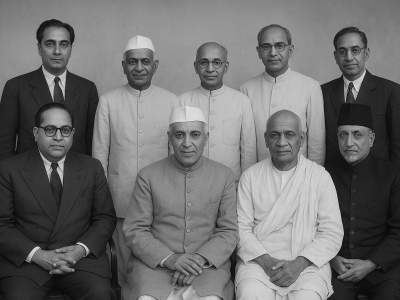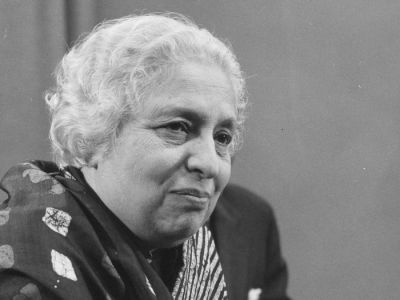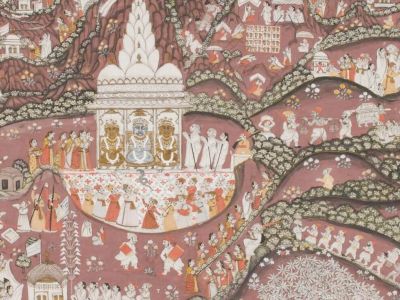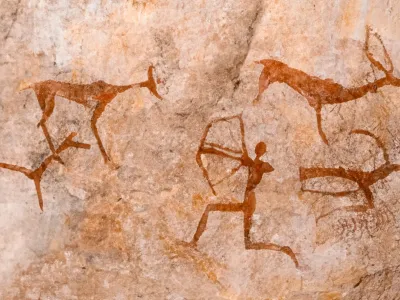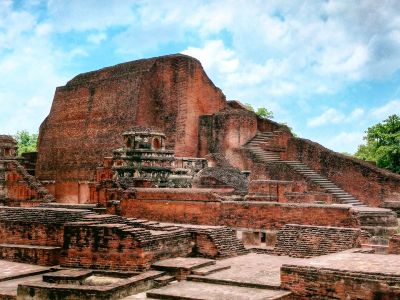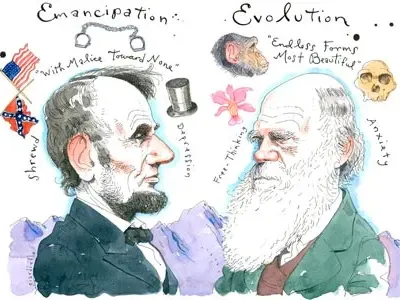List of Ancient Universities From Around The World

The history of human civilization is profoundly marked by the pursuit of knowledge and the establishment of institutions dedicated to learning and scholarship. Ancient universities and libraries played a pivotal role in preserving and disseminating knowledge across generations and cultures. These venerable institutions were the bedrock of intellectual development, fostering advancements in a wide range of fields, including philosophy, science, medicine, law, and the arts. From the famed halls of Nalanda in India to the storied shelves of the Library of Alexandria in Egypt, these centers of learning attracted scholars from all corners of the world, contributing significantly to the cultural and intellectual heritage of humanity. This comprehensive exploration delves into some of the most renowned ancient universities and libraries, shedding light on their historical significance and enduring legacy.
List of Ancient Universities
Nalanda University (Bihar, India)
Founded: 5th Century CE
Overview: An ancient center of higher learning in Bihar, India, Nalanda was a monumental institution with a vast library and thousands of scholars and students. It attracted scholars from as far as Tibet, China, Korea, and Central Asia. The curriculum included Buddhist scriptures, logic, grammar, medicine, and arts.
Takshashila (Taxila, Pakistan)
Founded: 5th Century BCE
Overview: One of the earliest known universities in the world, Takshashila was renowned for its diverse curriculum. Subjects taught included Vedas, languages, grammar, philosophy, medicine, surgery, archery, politics, warfare, astronomy, and music. It was a significant cultural and learning center in ancient India.
University of al-Qarawiyyin (Fez, Morocco)
Founded: 859 CE
Overview: Established by Fatima al-Fihri, it is considered the oldest continuously operating, degree-granting university in the world. Initially, it was a madrasa and evolved into a leading educational and spiritual institution in the Muslim world. The university's curriculum covered a range of subjects, including natural sciences, medicine, mathematics, astronomy, and philosophy.
Al-Azhar University (Cairo, Egypt)
Founded: 970-972 CE
Overview: Founded by the Fatimid Caliphate, Al-Azhar became the foremost center for Islamic jurisprudence, theology, and learning. It played a pivotal role in the Islamic Golden Age, offering extensive education in Arabic grammar, rhetoric, logic, and Islamic law.
University of Bologna (Bologna, Italy)
Founded: 1088 CE
Overview: Recognized as the oldest university in continuous operation in Europe, Bologna was a major center for academic scholarship during the Middle Ages. It specialized in canon and civil law and later expanded to the study of philosophy, mathematics, and medicine.
University of Paris (Sorbonne, France)
Founded: 1150 CE
Overview: Known as the Sorbonne, the University of Paris became one of the first universities in Europe to gain a significant international reputation. It was a hub for scholastic philosophy and theology, producing numerous prominent scholars, including Thomas Aquinas.
University of Constantinople (Byzantine Empire, now Istanbul, Turkey)
Founded: 425 CE
Overview: Established by Emperor Theodosius II, the University of Constantinople was one of the earliest institutions of higher learning in Europe. It was primarily a center for studying law, philosophy, medicine, and rhetoric, playing a significant role in the education system of the Byzantine Empire.
Vikramashila University (Bihar, India)
Founded: Late 8th or Early 9th Century CE
Overview: Established by the Pala dynasty, Vikramashila was an important center of learning and one of the three most significant Buddhist universities in ancient India, alongside Nalanda and Odantapuri. The university specialized in Vajrayana Buddhism and Tantric studies.
Odantapuri University (Bihar, India)
Founded: 8th Century CE
Overview: Another prominent Buddhist center of learning in ancient India, Odantapuri was established by the Pala Emperor Gopala I. It focused on Buddhist teachings and philosophies and attracted scholars from across Asia until it was destroyed by invading forces in the 12th century.
University of Salerno (Salerno, Italy)
Founded: 9th Century CE
Overview: The University of Salerno is considered the oldest medical school in the world. It flourished during the Middle Ages as a center for medical knowledge and practice. The university compiled and translated many medical texts from Arabic and Greek sources, significantly influencing European medicine.
Nanjing University (Nanjing, China)
Founded: 258 CE
Overview: Originally established as a Confucian school, Nanjing University has a long history of academic excellence in China. It has undergone numerous transformations over the centuries, evolving into a modern university while maintaining its legacy as one of China's oldest institutions of higher learning.
Cuicuilco (Valley of Mexico, Mexico)
Founded: Circa 700 BCE
Overview: Although not a university in the modern sense, Cuicuilco was a major cultural and religious center of the pre-Columbian era. It is known for its impressive pyramidal structures and served as a hub for the exchange of knowledge and religious teachings among Mesoamerican civilizations.
Tenochtitlan (Mexico City, Mexico)
Founded: 1325 CE
Overview: The Aztec capital Tenochtitlan housed a prominent educational institution called the Calmecac. This institution was dedicated to educating the sons of the nobility in subjects like astronomy, mathematics, theology, and governance. The Telpochcalli was another institution for commoners, focusing on practical skills and military training.
Machu Picchu (Cusco Region, Peru)
Founded: 15th Century CE
Overview: Machu Picchu, while primarily known as a citadel, also served as a center for astronomical and agricultural knowledge. The Inca civilization used the site to study the stars and conduct religious ceremonies, passing down vital knowledge through oral traditions and physical structures.
Cahokia (Illinois, USA)
Founded: Circa 600 CE
Overview: The largest pre-Columbian settlement north of Mexico, Cahokia was a major cultural and political center. It featured complex social structures and extensive knowledge in fields such as agriculture, astronomy, and engineering, taught through communal gatherings and ceremonies.
List of Ancient Libraries
Library of Alexandria (Alexandria, Egypt)
Founded: 3rd Century BCE
Overview: The most famous library of the ancient world, the Library of Alexandria was established under the patronage of the Ptolemaic dynasty. It housed hundreds of thousands of scrolls and works by many of the greatest minds of antiquity, including Homer, Plato, and Socrates. The library was a center for scholarly work and contributed to advances in science, mathematics, and literature.
Imperial Library of Constantinople (Byzantine Empire, now Istanbul, Turkey)
Founded: 4th Century CE
Overview: This library was one of the most significant collections of texts in the Byzantine Empire. It housed numerous Greek and Roman works and played a crucial role in preserving classical knowledge through the medieval period until its destruction during the Fourth Crusade in 1204.
Villa of the Papyri (Herculaneum, Italy)
Founded: 1st Century BCE
Overview: This private library, buried by the eruption of Mount Vesuvius in 79 CE, contained a vast collection of papyrus scrolls, primarily focused on Epicurean philosophy. Rediscovered in the 18th century, it offers a rare glimpse into the private libraries of the ancient world.
Library of Trajan's Forum (Rome, Italy)
Founded: 2nd Century CE
Overview: Located within Trajan's Forum, this library was divided into Greek and Latin sections, reflecting the diverse cultural influences in Rome. It served as an important resource for scholars and citizens, containing numerous works on philosophy, history, and rhetoric.
Library of Antioch (Antioch, Turkey)
Founded: 4th Century CE
Overview: The Library of Antioch was one of the significant early Christian libraries. It contained a vast collection of religious texts, including early Christian writings and biblical manuscripts, playing a vital role in the theological and scholarly activities of the time.
Library of King Ashurbanipal (Nineveh, Iraq)
Founded: 7th Century BCE
Overview: Established by the Assyrian king Ashurbanipal, this library is one of the earliest and most significant collections of written material in ancient Mesopotamia. It housed thousands of clay tablets inscribed with cuneiform script, covering administrative records, literary works, and scientific texts.
Library of Pergamum (Pergamon, Turkey)
Founded: 3rd Century BCE
Overview: Established by the Attalid dynasty, the Library of Pergamum was second only to the Library of Alexandria. It is credited with the invention of parchment as a writing material. The library contained approximately 200,000 volumes and was a center for scholarly activities in Hellenistic times.
House of Wisdom (Baghdad, Iraq)
Founded: 8th Century CE
Overview: A major intellectual center during the Islamic Golden Age, the House of Wisdom was founded by the Abbasid caliphs. It was a library, translation institute, and research center where scholars translated and preserved works of Greek, Persian, and Indian science and philosophy. The institution played a crucial role in the advancement of mathematics, astronomy, medicine, and chemistry.
Library of Celsus (Ephesus, Turkey)
Founded: 135 CE
Overview: Built in honor of Tiberius Julius Celsus Polemaeanus, the library was both a monumental tomb and a public library. It could hold about 12,000 scrolls and served as an important educational resource for the people of Ephesus. The architecture of the library is renowned for its facade, which has been extensively restored.
Nalanda Library (Bihar, India)
Founded: 5th Century CE
Overview: As part of the Nalanda University, the library was one of the greatest repositories of Buddhist knowledge. It housed thousands of manuscripts on various subjects including Buddhist texts, philosophy, science, and literature. Unfortunately, it was destroyed in the 12th century during the invasions by the Turkic Muslim rulers.
Library of Ashurbanipal (Nineveh, Iraq)
Founded: 7th Century BCE
Overview: Assembled by the Assyrian king Ashurbanipal, this library is one of the earliest known collections of written material. It contained a vast number of clay tablets inscribed with cuneiform script, covering topics from administrative records to literary works like the Epic of Gilgamesh.
Maya Codices (Various Sites, Mesoamerica)
Founded: Various dates, primarily 3rd to 9th Century CE
Overview: The ancient Maya civilization created numerous codices, which were screenfold books made from bark paper. These codices contained vast amounts of information on astronomy, calendrical systems, mythology, and rituals, serving as portable libraries for the elite scribes and priests.
Inca Quipus (Andean Region, South America)
Founded: Circa 15th Century CE
Overview: The Inca utilized quipus, a system of knotted strings, as their method of record-keeping and information storage. These devices recorded data related to census, agricultural production, and astronomical events, effectively acting as a decentralized library system.
Aztec Codices (Tenochtitlan, Mexico)
Founded: Circa 14th to 16th Century CE
Overview: The Aztec produced numerous codices, similar to those of the Maya, which documented historical events, religious practices, and administrative records. These codices were crucial for preserving Aztec knowledge and were often created and maintained by learned scribes known as tlacuilos.
Library of the Sipán (Moche Valley, Peru)
Founded: Circa 1st to 8th Century CE
Overview: The Moche civilization, based in northern Peru, left behind rich archaeological evidence of their sophisticated knowledge in metallurgy, ceramics, and architecture. While not a library in the traditional sense, the artifacts and iconography found at sites like Sipán act as a repository of Moche cultural and technical knowledge.
These ancient institutions not only served as centers for learning and scholarship but also played critical roles in preserving and transmitting knowledge across generations and civilizations.
The ancient universities and libraries of the world stand as testaments to the timeless human quest for knowledge and understanding. These institutions not only cultivated some of the greatest minds of their eras but also laid the foundations for modern education and scholarship. They served as beacons of learning, where scholars gathered to debate, discover, and disseminate ideas that shaped the course of history. Despite the passage of centuries and the ravages of time, the legacy of these ancient centers of learning continues to inspire contemporary academia. By preserving and expanding upon the wisdom of the past, modern institutions of higher education and libraries carry forward the enduring mission of fostering intellectual growth and cultural enrichment, ensuring that the light of knowledge remains undimmed for future generations.
